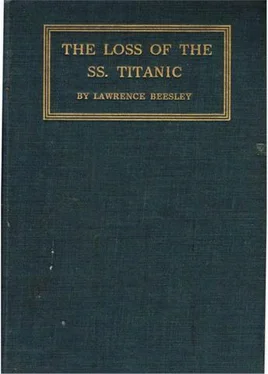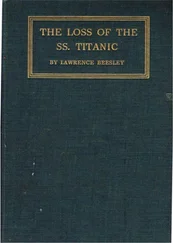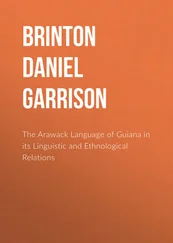In the first place, disabusing our minds again of the knowledge that the Titanic struck an iceberg and sank, let us estimate the probabilities of such a thing happening. An iceberg is small and occupies little room by comparison with the broad ocean on which it floats; and the chances of another small object like a ship colliding with it and being sunk are very small: the chances are, as a matter of fact, one in a million. This is not a figure of speech: that is the actual risk for total loss by collision with an iceberg as accepted by insurance companies. The one-in-a-million accident was what sunk the Titanic.
Even so, had Captain Smith been alone in taking that risk, he would have had to bear all the blame for the resulting disaster. But it seems he is not alone: the same risk has been taken over and over again by fast mail-passenger liners, in fog and in iceberg regions. Their captains have taken the long—very long—chance many times and won every time; he took it as he had done many times before, and lost. Of course, the chances that night of striking an iceberg were much greater than one in a million: they had been enormously increased by the extreme southerly position of icebergs and field ice and by the unusual number of the former. Thinking over the scene that met our eyes from the deck of the Carpathia after we boarded her,—the great number of icebergs wherever the eye could reach,—the chances of not hitting one in the darkness of the night seemed small. Indeed, the more one thinks about the Carpathia coming at full speed through all those icebergs in the darkness, the more inexplicable does it seem. True, the captain had an extra lookout watch and every sense of every man on the bridge alert to detect the least sign of danger, and again he was not going so fast as the Titanic and would have his ship under more control; but granted all that, he appears to have taken a great risk as he dogged and twisted round the awful two-hundred-foot monsters in the dark night. Does it mean that the risk is not so great as we who have seen the abnormal and not the normal side of taking risks with icebergs might suppose? He had his own ship and passengers to consider, and he had no right to take too great a risk.
But Captain Smith could not know icebergs were there in such numbers: what warnings he had of them is not yet thoroughly established,—there were probably three,—but it is in the highest degree unlikely that he knew that any vessel had seen them in such quantities as we saw them Monday morning; in fact, it is unthinkable. He thought, no doubt, he was taking an ordinary risk, and it turned out to be an extraordinary one. To read some criticisms it would seem as if he deliberately ran his ship in defiance of all custom through a region infested with icebergs, and did a thing which no one has ever done before; that he outraged all precedent by not slowing down. But it is plain that he did not. Every captain who has run full speed through fog and iceberg regions is to blame for the disaster as much as he is: they got through and he did not. Other liners can go faster than the Titanic could possibly do; had they struck ice they would have been injured even more deeply than she was, for it must not be forgotten that the force of impact varies as the square of the velocity—i.e., it is four times as much at sixteen knots as at eight knots, nine times as much at twenty-four, and so on. And with not much margin of time left for these fast boats, they must go full speed ahead nearly all the time. Remember how they advertise to “Leave New York Wednesday, dine in London the following Monday,”—and it is done regularly, much as an express train is run to time. Their officers, too, would have been less able to avoid a collision than Murdock of the Titanic was, for at the greater speed, they would be on the iceberg in shorter time. Many passengers can tell of crossing with fog a good deal of the way, sometimes almost all the way, and they have been only a few hours late at the end of the journey.
So that it is the custom that is at fault, not one particular captain. Custom is established largely by demand, and supply too is the answer to demand. What the public demanded the White Star Line supplied, and so both the public and the Line are concerned with the question of indirect responsibility.
The public has demanded, more and more every year, greater speed as well as greater comfort, and by ceasing to patronize the low-speed boats has gradually forced the pace to what it is at present. Not that speed in itself is a dangerous thing,—it is sometimes much safer to go quickly than slowly,—but that, given the facilities for speed and the stimulus exerted by the constant public demand for it, occasions arise when the judgment of those in command of a ship becomes swayed—largely unconsciously, no doubt—in favour of taking risks which the smaller liners would never take. The demand on the skipper of a boat like the Californian, for example, which lay hove-to nineteen miles away with her engines stopped, is infinitesimal compared with that on Captain Smith. An old traveller told me on the Carpathia that he has often grumbled to the officers for what he called absurd precautions in lying to and wasting his time, which he regarded as very valuable; but after hearing of the Titanic’s loss he recognized that he was to some extent responsible for the speed at which she had travelled, and would never be so again. He had been one of the travelling public who had constantly demanded to be taken to his journey’s end in the shortest possible time, and had “made a row” about it if he was likely to be late. There are some business men to whom the five or six days on board are exceedingly irksome and represent a waste of time; even an hour saved at the journey’s end is a consideration to them. And if the demand is not always a conscious one, it is there as an unconscious factor always urging the highest speed of which the ship is capable. The man who demands fast travel unreasonably must undoubtedly take his share in the responsibility. He asks to be taken over at a speed which will land him in something over four days; he forgets perhaps that Columbus took ninety days in a forty-ton boat, and that only fifty years ago paddle steamers took six weeks, and all the time the demand is greater and the strain is more: the public demand speed and luxury; the lines supply it, until presently the safety limit is reached, the undue risk is taken—and the Titanic goes down. All of us who have cried for greater speed must take our share in the responsibility. The expression of such a desire and the discontent with so-called slow travel are the seed sown in the minds of men, to bear fruit presently in an insistence on greater speed. We may not have done so directly, but we may perhaps have talked about it and thought about it, and we know no action begins without thought.
The White Star Line has received very rough handling from some of the press, but the greater part of this criticism seems to be unwarranted and to arise from the desire to find a scapegoat. After all they had made better provision for the passengers the Titanic carried than any other line has done, for they had built what they believed to be a huge lifeboat, unsinkable in all ordinary conditions. Those who embarked in her were almost certainly in the safest ship (along with the Olympic) afloat: she was probably quite immune from the ordinary effects of wind, waves and collisions at sea, and needed to fear nothing but running on a rock or, what was worse, a floating iceberg; for the effects of collision were, so far as damage was concerned, the same as if it had been a rock, and the danger greater, for one is charted and the other is not. Then, too, while the theory of the unsinkable boat has been destroyed at the same time as the boat itself, we should not forget that it served a useful purpose on deck that night—it eliminated largely the possibility of panic, and those rushes for the boats which might have swamped some of them. I do not wish for a moment to suggest that such things would have happened, because the more information that comes to hand of the conduct of the people on board, the more wonderful seems the complete self-control of all, even when the last boats had gone and nothing but the rising waters met their eyes—only that the generally entertained theory rendered such things less probable. The theory, indeed, was really a safeguard, though built on a false premise.
Читать дальше












